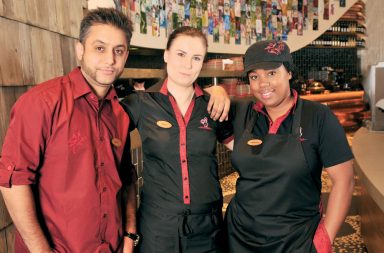When it comes to businesses, we strive to make everything fit in nice, tidy packages.
We think that the more we homogenize things, the better our workplaces will function. It’s ironic that people throw around the term “outside the box” when the majority of people’s efforts are to build a bigger box for everything to fit inside it.
This is most certainly true when it comes to culture. HR wants to maintain the mythical existence that there is one, and ONLY one, a culture that is present. This has never been the case. In fact, it can’t be true because of one factor that throws a wrench in this theory . . . people.
Cultures within companies are reflective of cultures in society. The amazing people within your company are as unique and diverse inside your workplaces as they are in their own neighbourhoods. There is no magic wand that HR can wave by a cute slogan or program that alters this. We need to quit trying to make everyone “fit” and understand that they already do fit because of who they are – not who we think they should be.
Want to see if this is true? Think of the various departments you have in your organization. Are they similar in their make-up and approach, or are they vastly different? We honestly don’t take the time to see how wonderfully diverse they are. Finance is different than HR which is not the same as Sales and even Marketing has nuances that make it stand apart. If you have multiple locations, then the spectrum widens even more because you have the factors of geography, demographics of the team, varied levels of skills and experiences, etc.
There are almost endless combinations of culture that make up the organization as a whole. I see “culture” more as an organism made up of various parts that has life, movement, and influence. The people that comprise these microcultures are looking for a combination of stability and identity. It’s a rough combination to try and make work. There is an approach to take as HR within this cool make-up. However, it takes courage and a willingness to break from the norm.
Multiple cultures can thrive with one simple action – permission. When HR gives managers and staff permission to be themselves versus trying to control and define culture to constrictive policies and procedures, then diverse cultures can work effectively. This seems like such a simple action. However, you’d be surprised at how many people are wishing for permission to be given so they can do what they feel they need to do.
HR needs to give itself “permission” to change it’s one size fits all approach and work within the diversity that exists naturally. It seems to be such a polarizing pull to work against the one culture model, but it’s necessary. Take the challenge to allow people to have multiple cultures with the knowledge that this reality is what makes companies, and HR, great !!




